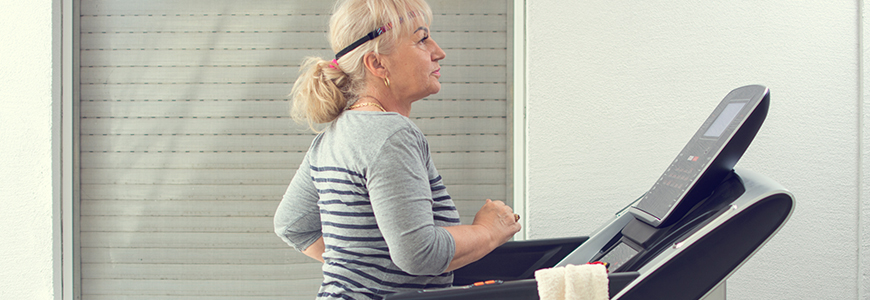A Duke Heart and Population Health Sciences collaboration to launch remote cardiovascular rehabilitation using digital monitoring was accelerated this spring as a response to COVID-19.
In early April, the first patients participated in prescribed rehabilitation activities tracked digitally with wearable devices. Specialists at the Duke Health Cardiopulmonary Rehabilitation Center monitored results to provide feedback and guidance. Recorded data included an EKG rhythm strip. In the future, remote data review will include blood pressure, weight and glucose level.
Duke’s effort is among the first remote cardiovascular rehabilitation programs in the nation, says William E. Kraus, MD, a cardiologist, medical director of Duke Cardiopulmonary Rehabilitation and advocate for remote rehabilitation.
“The urgency of our concerns about the effect of COVID-19 on patients with cardiovascular complications prompted us to move forward more rapidly than we planned,” says Kraus. “Fortunately, we had already created an interface with Duke’s medical infrastructure and established the key partnerships.”
Remote rehabilitation may improve participation among patients recovering from cardiothoracic surgery, myocardial infarction, heart failure, and related conditions. Patient uptake of cardiovascular rehabilitation stands at about 15% in the United States, Kraus says, although the percentage is “somewhat greater” in Duke’s on-site rehabilitation program.
Growth of remote cardiac rehabilitation will help more patients
Supporting the value of cardiac rehabilitation, a recent review of 180-day, all-cause rehospitalization and mortality among 240 cardiovascular rehabilitation patients reported a 40% reduction among patients who participated in a prescribed rehabilitation program. This was based on an analysis of Duke patients between 2010-2012, Kraus says.
“Over time, we hope to greatly expand the number of patients who participate with mobile, monitored rehabilitation,” Kraus says. “We would like to have as many remote participants as we do in our facility.”
Not every patient will be able to participate, cautions Karen Craig, MA, manager of cardiopulmonary rehabilitation. Patients must own a smart phone, have access to home wi-fi and be willing to perform prescribed, monitored exercises. The future program will provide several devices to patients, including a commercially available device for recording an EKG rhythm strip, a wrist-based activity monitor and other tools to measure weight, blood pressure, glucose levels and steps walked.
Planning for the remote rehabilitation program began approximately 16 months ago when the planning team integrated mobile rehabilitation with existing health system EHRs. The selection of a digital partner, Pattern Health, allowed the creation of a HIPAA-compliant process to retrieve and monitor health data. Kraus and colleagues designed the remote rehabilitation program with the hope of qualifying for reimbursement standards established by the Centers for Medicare and Medicaid Services.
